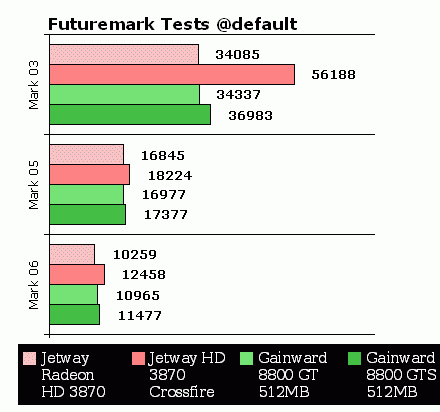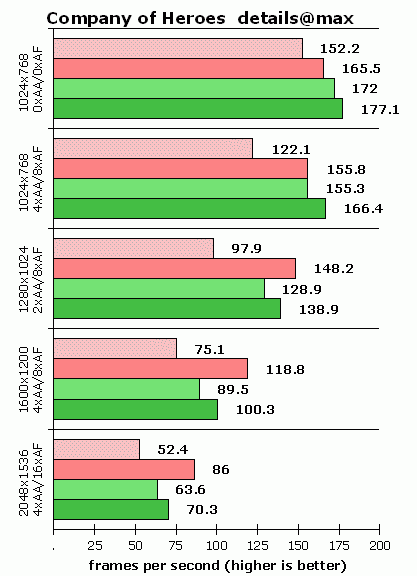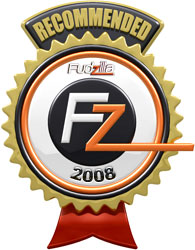MSI K9A2 Platinum is a high-end motherboard for AM2+ platforms, and it’s based on AMD's 790FX chipset. Anyone craving for dual, triple or quad CrossFire with a native quad-core Phenom under the hood will definitely find this motherboard to be a treat. The board has 4 physical PCI Express slots; two darker slots have 16X bandwidth, while the other two have 8X. All the PCIe slots are PCIe 2.0 compatible, but the board also packs one more PCI Express x1 and two PCI slots. In a scenario when 4 graphics cards are used, bandwidth is 8X on all the slots.

At a first glance, next to the PCIe slots, you’ll see the new Circu heatpipe that’s completely silent, and it stretches from the PWM part over the Northbridge and to the Southbridge. You’ll notice that in the space between the Nortbridge and the Southbridge one heatpipe runs over the other, and that helps in stabilizing the temperature of the chipset. The CPU packs enough space around it to fit the largest CPU coolers, and since the Circu-pipe is quite low, you can easily stretch a CPU cooler to fit above the chipset cooler.

The motherboard has 5-phase PWM design, and it’s built using full solid capacitors. It supports DDR2 up to 1066MHz (8GB), has four SATA 2.0 connectors through SB600 Southbridge and another two through a Promise add-on controller (painted red). These two SATA connectors have SAS Serial Attached SCSI support, and that’s still one of the best and fastest ways of transferring data. This is usually a server feature, but MSI introduced it to the high-end desktop market. Still, these disks are not used as primary system disks, but rather as storage disks. The I/O panel has two always useful eSATA (again through Promise add-on controller, SAS capable), as well as four out of ten possible USB 2.0 ports. Dual Ethernet ports, FireWire and 7.1 channel sound with S/PDIF out are also there.
MSI K9A2 Platinum is a board with many great features. The board is constantly being improved, and three BIOS revisions in the last two months speak for themselves. MSI definitely seems to be gaining ground.

The only problem with having four ATI HD 3870 cards with dual slot coolers is that you’ll render the rest of the slots unusable. If you have a TV card or some other PCI card, using it with Quad CrossFire will not be possible. If you’re wondering what a single slot card is doing in this dual-slot party, the answer is quite simple, it's Sapphire's Atomic HD 3870.

The only way to prevent losing functionality of the board is using water cooling, or more single slot cards such as Sapphire HD 3870 Atomic. By doing that you’ll free up your PCI or PCI Express x1 slot. Still, this is not a problem we should discuss at this point – we’ll talk about it when the multi-CrossFire drivers come out.

The board features two overclocking-handy power and restart buttons, but they’re almost impossible to reach when the card is above them. The buttons are awkwardly placed near the second PCI Express slot, the one we use for CrossFire. The third card introduces yet another problem – two SATA connectors after the first one we’ve used are unusable. Still, this is only a problem if you own really large cards. Too bad there are no angled SATA connectors, because you never know how many disks a user might want.

For our testing we used AMD’s Athlon 64 X2 6400+ (Black Edition) at 3.2GHz, and two Jetway HD 3870 cards. We initially experienced some minor problems with CrossFire, but new drivers and a BIOS update did the trick.

Jetway’s cards run at default speeds, and the cards themselves are identical to the reference ones. It’s odd that there is no Jetway logo to be found on the card; the only way you can be sure of that is if you read the X38XT-EN-512Q model name off the side of the box. The box is quite unusual, a bit too basic and it doesn’t do this high-end card any justice.

Testbed:
Motherboard:
MSI K9A2 Platinum
Processor:
AMD Athlon 64 X2 6400+ (Black Edition) at 3.2HGz
Graphics cards:
Gainward 8800 GT 512MB, 
Gainward 8800GTS 512MB
Jetway Radeon HD 3870 512MB
Memory:
OCZ PC2 6400 2GB CL4-4-4-15-CR2T 800MHz
Certified By ATI
PSU:
OCZ Silencer 750 Quad Black
Hard disk:
Seagate Barracuda 7200.9 80GB SATA
CPU-Cooler:
Freezer 7 Pro
3DMarks

In 3DMark03, Crossfire has shown its true face and compared to a single card, we see the performance increase of 64%. However, 3DMark05 brings this increase all the way to 8%, while 3DMark06 brings it up to 21%.
In 3DMark06, ATI’s dual CrossFire beats 8800 GT by 13%, and 8800 GTS (G92) by 8%.
Gaming

The first game we tested, F.E.A.R, seems to really like CrossFire. At 1600x1200, two Jetway HD 3870 cards outperform 8800 GTS by 40% and 8800GT by 50%. Higher resolutions usually bring the best out of these cards, because at these workloads single card can get overburdened. At 2048x1536 Crossfire further increases its lead over 8800 GTS to 50%, and at this resolution it outperforms a single HD 3870 by 87%. Some games are capable of utilizing Crossfire or SLI, while others might give different (read worse) results.

Company of Heroes is another CrossFire-friendly game. Although you can comfortably play it on highest resolutions and detail settings using a single Jetway HD 3870 card, two cards will definitely make you a happy camper. 118 frames at 1600x1200 is definitely something to brag about. At this resolution, one card is 57% slower than two. Nvidia still holds its ground, though, and the CrossFire performance advantage is not as high as we’ve seen in F.E.A.R. Geforce 8800 GTS is slower by 18%.

ATI game Half Life 2 Episode Two didn’t fare so well on Radeon HD 3870 cards. It’s only at higher resolutions when the RV670 chips’ real power is harnessed, so CrossFire beats a single 8800 GTS. It’s a bit disappointing, but we will check whether Catalyst 8.1 improves the score. We used Catalyst 7.12. Still, 2948x1536 is playable with a single HD 3870 card.

With detail settings set on "high," World in Conflict is just too much for today’s cards to take. CrossFire manages to churn out a playable frame rate at 2048x1536, while the rest of the pack simply can’t make it.
Conclusion
You can find many CrossFire capable boards on the market today, but not many of those are quad-core Phenom ready. MSI RD790 K9A2 Platinum is one of those, and it’s also aimed at overclockers. We didn’t play with overclocking, but we definitely will soon. The board has it all, so now it’s up to AMD and Phenom to produce better overclocking models.
We based our test on a single question: Is CrossFire ready yet and is it worth buying two of the currently highest priced ATI’s cards? Those who buy two graphics cards are usually aiming at gaming, and today we’ve proven that there are advantages to buying two cards.
CrossFire loves high resolutions, and although the driver needs more polishing, it’s still faster than Nvidia’s 8800 GTS, and definitely come in handy at resolutions of over 1920x1200. Of course, if you turn on FSAA and Anisotropic filtering the performance gap between one and two cards will accordingly rise. Now it’s up to Phenom to make a phenomenal platform out of MSI K9A2 Platinum board based on the 790FX chipset with two MSI’s and Jetway’s 3870 cards. We definitely recommend this board, and for €140 it’s a bargain.



